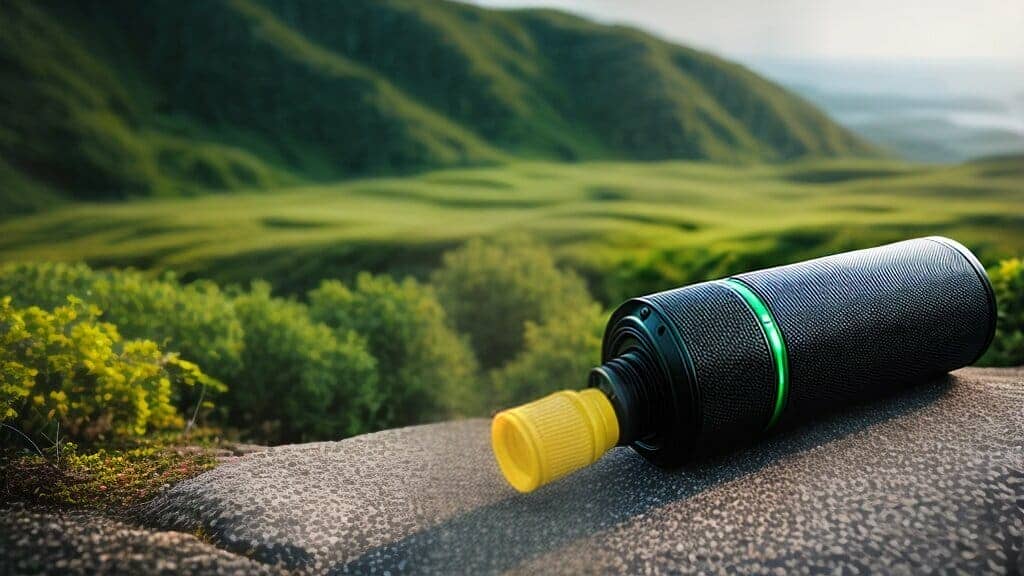Lyme Disease is a tick-borne illness caused by the bacterium Borrelia burgdorferi. While it is prevalent in the United States, the disease varies in its prevalence and severity across different climates, making it crucial to understand its impact in those regions.
Climate plays a significant role in the transmission and prevalence of Lyme Disease. It affects factors such as tick populations and their ability to survive and reproduce, which can influence the incidence and spread of the disease. Understanding how climate influences the disease can help individuals take preventive measures and tailor their treatment plans.
KEY TAKEAWAYS:
- Lyme Disease prevalence and severity varies across different climates.
- Climate impacts tick populations and their ability to spread the disease.
- Knowledge of climate effects can inform preventive measures and treatment plans.
What is Lyme Disease?
Lyme Disease is a bacterial infection caused by the Borrelia burgdorferi bacterium, which is spread through the bite of an infected black-legged or deer tick.
The disease is prevalent in the United States, particularly in the Northeast and Upper Midwest regions, as well as parts of the Pacific Northwest.
Early symptoms of Lyme Disease can include fever, headache, fatigue, and a distinctive rash known as erythema migrans. If left untreated, the disease can progress to more severe symptoms, including joint pain, facial palsy, and heart palpitations.
Treatment for Lyme Disease typically involves a course of antibiotics, which is most effective when administered early in the infection. In cases of chronic Lyme Disease, treatment may require a more integrative approach, combining conventional medicine with complementary therapies.

Geographical Variations of Lyme Disease
Lyme Disease is a bacterial infection transmitted by the bite of an infected tick. The disease was first identified in Lyme, Connecticut, but it has since spread to other regions of the United States. Lyme Disease is most commonly found in the Northeastern and Upper Midwestern regions of the country, with some parts of California also seeing a high prevalence.
Prevalence in Different Regions
The Northeastern region of the United States is home to the highest prevalence of Lyme Disease, with more than 95% of cases reported in this region. This includes states such as Connecticut, New York, New Jersey, Massachusetts, Pennsylvania, and Rhode Island. The Upper Midwestern region, which includes Minnesota and Wisconsin, also reports a high incidence of the disease.
California has also seen an increase in Lyme Disease cases in recent years, particularly in the northern part of the state. Other regions of the country, such as the Southeast, have seen fewer cases of the disease, although this may be due in part to underreporting or misdiagnosis.
Factors Contributing to Regional Variations
The prevalence of Lyme Disease in different regions is influenced by a number of factors, including the presence of the black-legged tick (also known as the deer tick), which is the primary vector for the disease. Ticks thrive in wooded areas and areas with high grass, which may explain why Lyme Disease is most common in the Northeastern region of the country.
The incidence of Lyme Disease is also influenced by the presence of host animals, such as deer and rodents, which serve as reservoirs for the disease-causing bacteria. Regional variations in these host populations may contribute to the variations in Lyme Disease prevalence seen across the United States.
Finally, climate factors such as temperature and humidity can also play a role in the transmission of Lyme Disease. Warmer temperatures and increased humidity may lead to an increase in tick populations, and therefore an increase in Lyme Disease cases.

Image source: US Centers for Disease Control and Prevention (CDC).
Climate Impact on Lyme Disease Transmission
Climate plays a significant role in the transmission of Lyme Disease. The prevalence and activity of the ticks responsible for transmitting the disease are affected by temperature, humidity, and vegetation.
Research has shown that tick activity is highest in areas with temperatures between 55-70°F and humidity levels above 85%. In regions with colder temperatures, ticks become less active and are less likely to transmit the disease. However, in warmer regions, ticks can remain active for extended periods, increasing the risk of transmission.
| Climate Factor | Impact on Ticks |
|---|---|
| Temperature | Higher temperatures lead to increased tick activity and a longer active season. |
| Humidity | High humidity levels promote tick survival and activity. |
| Vegetation | Ticks prefer wooded areas with high vegetation density, providing shelter and hosts for feeding. |
In addition to these factors, changes in climate patterns can also impact the distribution and prevalence of ticks, leading to shifts in Lyme Disease transmission patterns. For example, warmer winters and drought conditions can increase tick survival rates and lead to earlier activity in the spring.
Understanding the impact of climate on Lyme Disease transmission is essential for developing effective prevention and treatment strategies. By taking into account climate-related factors, individuals can better protect themselves from tick bites and reduce their risk of contracting Lyme Disease.

Coping with Lyme Disease in Different Climates
Living with Lyme Disease can be challenging, but individuals living in different climates face unique obstacles when managing their condition. Those living in areas with a higher prevalence of the disease and more favorable tick habitats may need to take extra precautions to avoid ticks and prevent further infections.
Here are some strategies for coping with Lyme Disease in different climates:
- Be vigilant about tick prevention: Individuals living in areas with a high prevalence of Lyme Disease should take steps to prevent tick bites. This includes wearing protective clothing, using insect repellent, and conducting regular tick checks.
- Monitor symptoms regularly: Lyme Disease symptoms can vary depending on climate, so it’s important to stay aware of changes in symptoms and seek medical attention if necessary.
- Adjust treatment plans accordingly: Different climates may require different treatment approaches. For example, those living in warmer, more humid regions may need to take extra measures to manage symptoms such as joint pain and fatigue. Consult with your healthcare provider to develop a treatment plan that works for you.
By taking proactive steps to manage their condition and adapting treatment plans to suit their environment, individuals with Lyme Disease can minimize the impact of the disease on their daily lives.

Adapting Treatment for Lyme Disease in Different Climates
Lyme Disease treatment approaches may need to be adapted to suit the unique needs of individuals in different climates. The effectiveness of various therapies may be influenced by climate-related factors such as temperature, humidity, and altitude.
It is important to consider these factors when creating a treatment plan for Lyme Disease. For example, patients living in cooler climates may benefit from longer antibiotic courses, while those in warmer climates may require a more aggressive approach due to a higher risk of tick exposure.
Combining Conventional and Complementary Therapies
At Oasis Medical Institute, an integrative medical approach is used to treat Lyme Disease. This approach combines conventional medicine with complementary therapies such as hydrotherapy, nutrition, and herbal remedies.
By combining these approaches, patients can benefit from a more holistic approach to treatment that takes into account the unique needs of their individual condition and environment. The integrative approach focuses on treating the whole person, not just the symptoms of the disease.
Personalized Treatment Plans
Personalized treatment plans are key to the success of Lyme Disease treatment, particularly in different climates. Treatment plans should be tailored to suit the individual’s specific needs and may change as the patient’s condition evolves.
At Oasis Medical Institute, patients undergo a thorough medical evaluation to assess their condition and unique needs. From there, a personalized treatment plan is created that takes into account their environment, lifestyle, and overall health.
Importance of Follow-up Care
Follow-up care is also crucial for Lyme Disease treatment in different climates. Patients may need to adjust their treatment plan based on changes in their environment or condition.
Regular check-ins with a healthcare provider can help ensure that treatment plans remain effective and that any necessary adjustments are made in a timely manner.

Lyme Disease Prevention Strategies
Prevention is key when it comes to Lyme Disease, especially for those living in areas with a high prevalence of ticks. The following strategies can reduce the risk of contracting the disease:
- Avoid areas with tall grass and leaf litter, as they provide ideal tick habitats.
- Wear long-sleeved shirts and pants, tucked into socks and shoes, to minimize skin exposure.
- Apply tick repellent to skin and clothing, following label instructions carefully.
- Perform daily tick checks, paying close attention to hard-to-see areas like the scalp, armpits, and groin.
- Machine-dry clothes on high heat for at least 10 minutes after spending time outdoors to kill any ticks.
By incorporating these preventive measures into their daily routines, individuals can greatly reduce the risk of contracting Lyme Disease in different climates.

Oasis Medical Institute: A Holistic Approach to Lyme Disease
Oasis Medical Institute, located in Tijuana, Mexico, is a renowned medical center dedicated to offering integrative treatment options for various health conditions, including Lyme Disease. The institute’s medical director, Dr. Francisco Contreras MD, brings more than 35 years of clinical experience to the table and has been instrumental in developing Oasis’s holistic approach to treating Lyme Disease.
Oasis Medical Institute offers a unique treatment approach that combines conventional medicine with complementary therapies to help patients achieve optimal health outcomes. The institute’s comprehensive treatment options include medically supervised detoxification, immune system support, natural supplements, and individualized nutrition plans.
As a testament to its commitment to providing cutting-edge healthcare, Oasis Medical Institute has been recognized as a top alternative healthcare provider by the Medical Tourism Association for five consecutive years.

At Oasis Medical Institute, patients with Lyme Disease receive personalized treatment plans that take into account individualized needs and climate-related factors. The institute’s integrative approach to Lyme Disease treatment is designed to promote natural healing, reduce the risk of symptom recurrence, and help patients regain their quality of life.
For individuals seeking an alternative to conventional Lyme Disease treatments, Oasis Medical Institute can help. Call 866-868-1992 to book a consultation and learn more about their Lyme Disease treatment program.
Understanding the Integrative Treatment Approach
At Oasis Medical Institute, Dr. Francisco Contreras MD and his team take a comprehensive approach to treating Lyme Disease. Their integrative treatment approach combines conventional medicine with evidence-based complementary therapies to achieve optimal patient outcomes.
Integrative treatment plans are tailored to the individual’s needs, taking into account climate-related factors and other relevant considerations. Patients receive a full medical evaluation, followed by a personalized treatment plan that may include antibiotics, immune support, detoxification, nutrition, and other complementary therapies.

“Our integrative approach to treating Lyme Disease enables us to address the underlying causes of the disease and treat it more effectively. By combining conventional medicine with complementary therapies, we can improve patient outcomes and help them regain their health and quality of life.” – Dr. Francisco Contreras MD
At Oasis Medical Institute, patients receive compassionate, personalized care in a state-of-the-art medical facility. The institute’s holistic treatments aim to address not only the physical symptoms of Lyme Disease but also the emotional, psychological, and spiritual aspects of the disease, promoting overall healing and well-being.
Booking a Consultation at Oasis Medical Institute
Individuals interested in learning more about Oasis Medical Institute’s integrative treatment approach for Lyme Disease can book a consultation by calling 866-868-1992. The institute’s experienced medical staff, led by Dr. Francisco Contreras MD, will work with patients to create personalized treatment plans tailored to their specific needs and living environments.
At Oasis Medical Institute, patients have access to a range of holistic treatments, including ozone therapy, hyperthermia, and high-dose vitamin C, alongside conventional medicine. By combining these approaches, the institute aims to provide a comprehensive and effective treatment option for Lyme Disease sufferers.
Don’t delay in taking the necessary steps to manage Lyme Disease and improve your quality of life. Contact Oasis Medical Institute today to schedule a consultation and take the first step towards reclaiming your health.

The Importance of Individualized Treatment
When it comes to treating Lyme Disease, a one-size-fits-all approach simply doesn’t work. Individuals living with Lyme Disease in different climates require individualized treatment plans that take into account their unique needs and circumstances. That’s because climate-related factors can have a significant impact on the transmission and prevalence of the disease, as well as the effectiveness of various treatment approaches.
By tailoring treatment plans to the individual’s needs, healthcare professionals can provide more targeted care that addresses the specific challenges posed by different climates. This can lead to improved treatment outcomes and a higher quality of life for those living with Lyme Disease.

At Oasis Medical Institute, Dr. Francisco Contreras MD and his team recognize the importance of personalized treatment plans for Lyme Disease patients. By taking a holistic approach to treatment that combines conventional medicine with complementary therapies, they are able to provide patients with a truly individualized experience that addresses their unique needs and promotes healing from the inside out.
The Role of Climate-Related Factors in Treatment
The impact of climate on Lyme Disease cannot be overstated. From temperature and humidity to vegetation and wildlife diversity, a range of factors can influence the prevalence and severity of the disease in different regions. By taking these factors into account during the treatment planning process, healthcare professionals can ensure that patients receive the care they need to manage their symptoms and prevent relapse.
For example, patients living in regions with high tick populations may require more frequent check-ups and tick prevention strategies to reduce their risk of infection. Patients living in areas with dry heat may require additional support to manage dehydration and avoid complications from treatment. By considering these and other factors, healthcare professionals can design treatment plans that are tailored to the individual, promoting the best possible outcomes for Lyme Disease patients.
Exploring Climate-Related Factors in Lyme Disease Development
Climate plays a significant role in the transmission and development of Lyme Disease. The prevalence and severity of the disease can vary depending on various environmental factors:
| Climate Factor | Effect on Lyme Disease |
|---|---|
| Temperature | High temperature and humidity can increase tick activity and survival rates, leading to a higher risk of exposure to Lyme Disease. |
| Vegetation | Tick populations thrive in areas with tall grasses, shrubs, and leaf litter. Thus, tick exposure is likely to be higher in regions with dense vegetation. |
| Geography | The prevalence of Lyme Disease is more common in regions with high tick activity, such as the Northeastern and Midwestern United States. |
| Severity of Winter | A mild winter may result in more ticks surviving, leading to an increase in Lyme Disease cases. |
It is essential to understand the impact of these factors to take appropriate precautions and reduce the risk of contracting Lyme Disease. These may include wearing protective clothing in areas with high tick activity, using insect repellent, and checking for ticks after spending time outdoors.

Seeking Early Detection and Treatment
Lyme Disease is a complex condition that requires careful attention and prompt treatment. Individuals who suspect they may have contracted Lyme Disease should seek medical attention immediately. Early detection and treatment can greatly improve treatment outcomes and reduce the risk of complications.
When seeking medical care for Lyme Disease, it is important to find a healthcare provider with experience in diagnosing and managing the condition. A healthcare provider who is familiar with the impact of climate on Lyme Disease can provide tailored treatment recommendations based on regional factors.
Individuals who have been diagnosed with Lyme Disease should also be vigilant about following their treatment plan and notifying their healthcare provider of any changes or concerns. By staying informed and seeking early detection and treatment, individuals with Lyme Disease can manage their symptoms and reduce the risk of long-term complications.

“Early detection and treatment can greatly improve treatment outcomes and reduce the risk of complications.”
Conclusion
As this article has shown, the impact of climate on Lyme Disease cannot be overstated. Different regions across the United States have varying levels of prevalence, largely due to differences in temperature, humidity, and vegetation. These factors not only affect the prevalence of ticks, but also their ability to transmit the disease.
It is therefore important for individuals to take preventive measures to avoid tick bites and seek prompt medical attention when necessary. It is also crucial for treatment plans to be tailored to the individual’s needs and to consider the impact of climate-related factors on the effectiveness of different therapies.
Oasis Medical Institute in Tijuana, MX, offers a unique integrative approach to treating Lyme Disease that considers the whole person and addresses underlying factors that may contribute to the disease. Their team of experts, led by Medical Director Dr. Francisco Contreras MD, provides personalized treatment plans that take into account climate-related factors and work in harmony with the individual’s body and lifestyle.
If you or someone you know is struggling with Lyme Disease, we encourage you to take action and seek out the best possible care. Remember, early detection and treatment, along with preventive measures, can make all the difference in the outcome of this disease. Contact Oasis Medical Institute today at 866-868-1992 to book a consultation and learn more about their tailored treatment program for Lyme Disease.
FAQ
Q: What is Lyme Disease?
A: Lyme Disease is a bacterial infection caused by the spirochete bacterium Borrelia burgdorferi. It is primarily transmitted to humans through the bite of infected black-legged ticks.
Q: How does Lyme Disease vary geographically?
A: The prevalence of Lyme Disease varies across different regions of the United States. It is most commonly found in the Northeast, upper Midwest, and Pacific coast. Factors such as climate, tick population, and human behavior contribute to these geographical variations.
Q: How does climate impact the transmission of Lyme Disease?
A: Climate plays a significant role in the transmission of Lyme Disease. Factors such as temperature, humidity, and vegetation affect the presence and activity of ticks, the vectors responsible for spreading the disease.
Q: How can individuals cope with Lyme Disease in different climates?
A: Individuals living with Lyme Disease should adopt strategies to manage their symptoms and prevent tick bites. This includes taking precautions such as wearing protective clothing, using insect repellents, and regularly checking for ticks.
Q: How can treatment for Lyme Disease be adapted to different climates?
A: Treatment plans for Lyme Disease should be tailored to suit the climate of the individual’s location. This may involve adjusting medication dosages, considering climate-related factors in therapy decisions, and exploring complementary therapies to enhance treatment outcomes.
Q: What are some Lyme Disease prevention strategies?
A: Preventive measures individuals can take to reduce their risk of contracting Lyme Disease include avoiding tick-prone areas, using tick repellents, wearing protective clothing, conducting tick checks, and creating tick-free environments around homes and outdoor spaces.
Q: What is the integrative approach to Lyme Disease treatment at Oasis Medical Institute?
A: Oasis Medical Institute offers an integrative approach to treating Lyme Disease, combining conventional medicine with complementary therapies. The institute’s holistic treatments aim to address the underlying causes of the disease and improve patients’ overall well-being.
Q: How can I book a consultation at Oasis Medical Institute for Lyme Disease treatment?
A: To book a consultation and learn more about the Lyme Disease treatment program at Oasis Medical Institute, please call 866-868-1992.
Q: Why is individualized treatment important for Lyme Disease?
A: Individualized treatment plans are crucial in Lyme Disease management as they consider the specific needs and climate-related factors of each patient. Tailored therapies can lead to more effective treatment outcomes and improved quality of life.
Q: What role do climate-related factors play in the development of Lyme Disease?
A: Climate-related factors such as temperature, humidity, and vegetation influence the prevalence and severity of Lyme Disease in different regions. These factors can impact tick activity, the availability of hosts, and the life cycle of the Lyme Disease bacteria.
Q: Why is early detection and treatment important in Lyme Disease?
A: Early detection and prompt treatment of Lyme Disease are essential to prevent the development of more severe symptoms and potential complications. Delayed diagnosis and treatment can lead to long-term health issues.
Dr. Francisco Contreras, MD is a renowned integrative medical physician with over 20 years of dedicated experience in the field of integrative medicine. As the Medical Director of the Oasis of Hope Hospital in Tijuana, Mexico, he has pioneered innovative treatments and integrative approaches that have been recognized globally for the treatment of cancer, Lyme Disease, Mold Toxicity, and chronic disease using alternative treatment modalities. Dr. Contreras holds a medical degree from the Autonomous University of Mexico in Toluca, and speciality in surgical oncology from the University of Vienna in Austria.
Under his visionary leadership, the Oasis of Hope Hospital has emerged as a leading institution, renowned for its innovative treatments and patient-centric approach for treating cancer, Lyme Disease, Mold Toxicity, Long-Haul COVID, and chronic disease. The hospital, under Dr. Contreras's guidance, has successfully treated thousands of patients, many of whom traveled from different parts of the world, seeking the unique and compassionate care the institution offers.
Dr. Contreras has contributed to numerous research papers, articles, and medical journals, solidifying his expertise in the realm of integrative medicine. His commitment to patient care and evidence-based treatments has earned him a reputation for trustworthiness and excellence. Dr. Contreras is frequently invited to speak at international conferences and has been featured on CNN, WMAR2 News, KGUN9 News, Tyent USA, and various others for his groundbreaking work. His dedication to the medical community and his patients is unwavering, making him a leading authority in the field.
Contreras has authored and co-authored several books concerning integrative therapy, cancer, Lyme Disease and heart disease prevention and chronic illness, including "The Art Science of Undermining Cancer", "The Art & Science of Undermining Cancer: Strategies to Slow, Control, Reverse", "Look Younger, Live Longer: 10 Steps to Reverse Aging and Live a Vibrant Life", "The Coming Cancer Cure Your Guide to effective alternative, conventional and integrative therapies", "Hope Medicine & Healing", "Health in the 21st Century: Will Doctors Survive?", "Healthy Heart: An alternative guide to a healthy heart", “The Hope of Living Cancer Free”, “Hope Of Living Long And Well: 10 Steps to look younger, feel better, live longer” “Fighting Cancer 20 Different Ways”, "50 Critical Cancer Answers: Your Personal Battle Plan for Beating Cancer", "To Beat . . . Or Not to Beat?", and “Dismantling Cancer.”






















